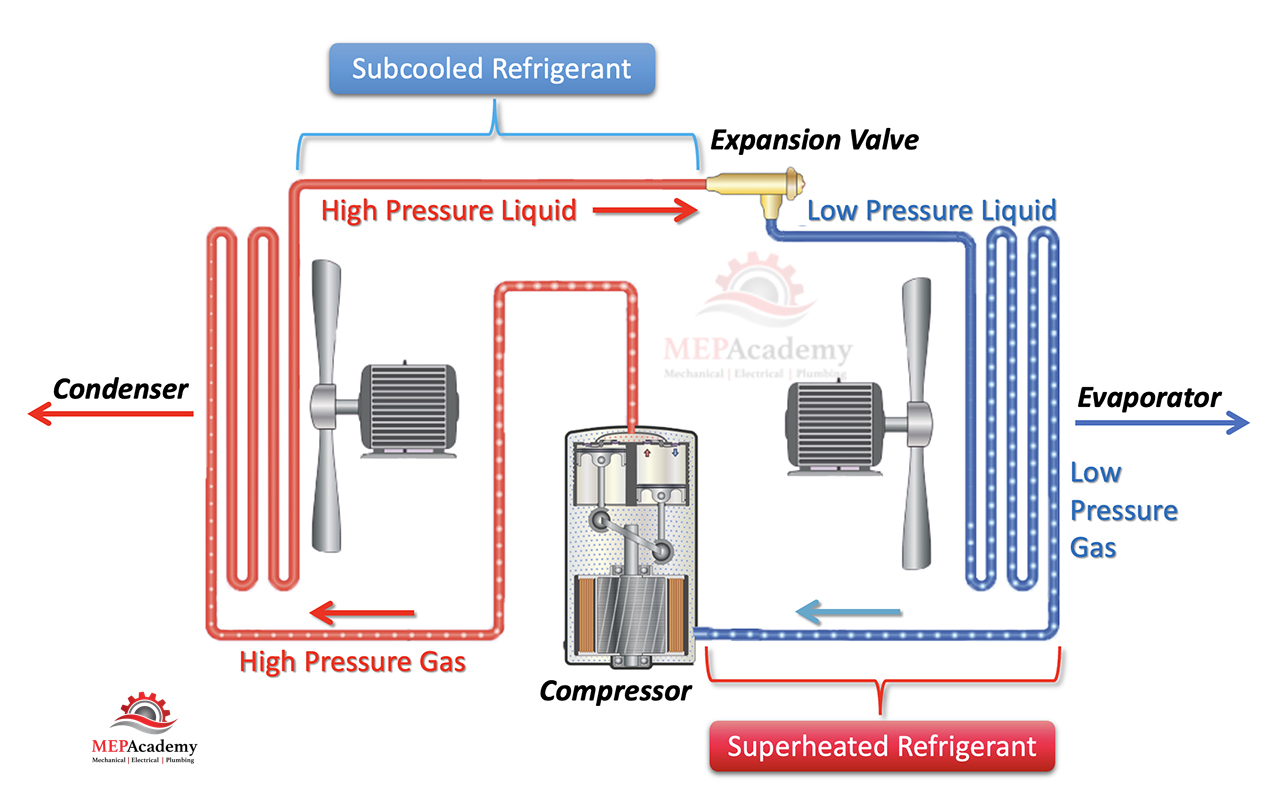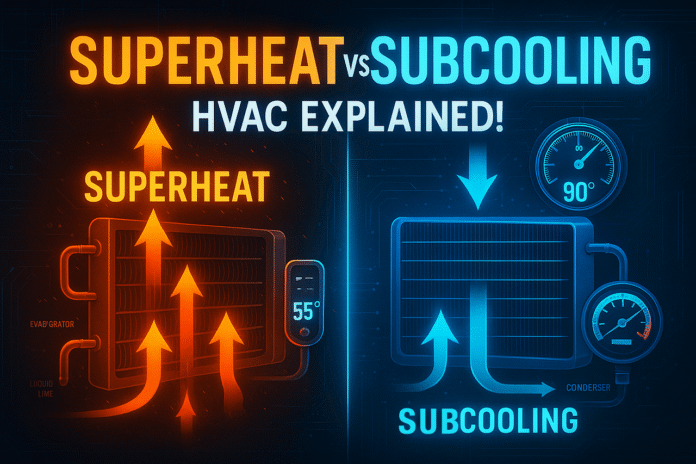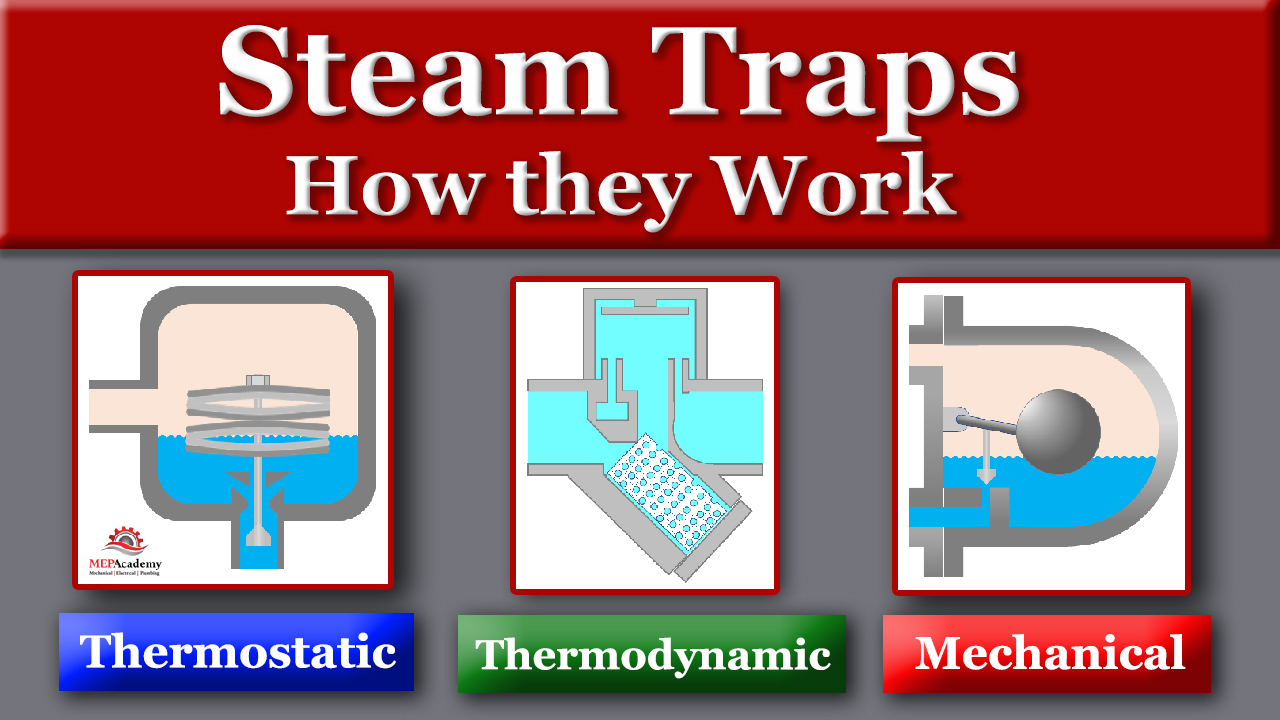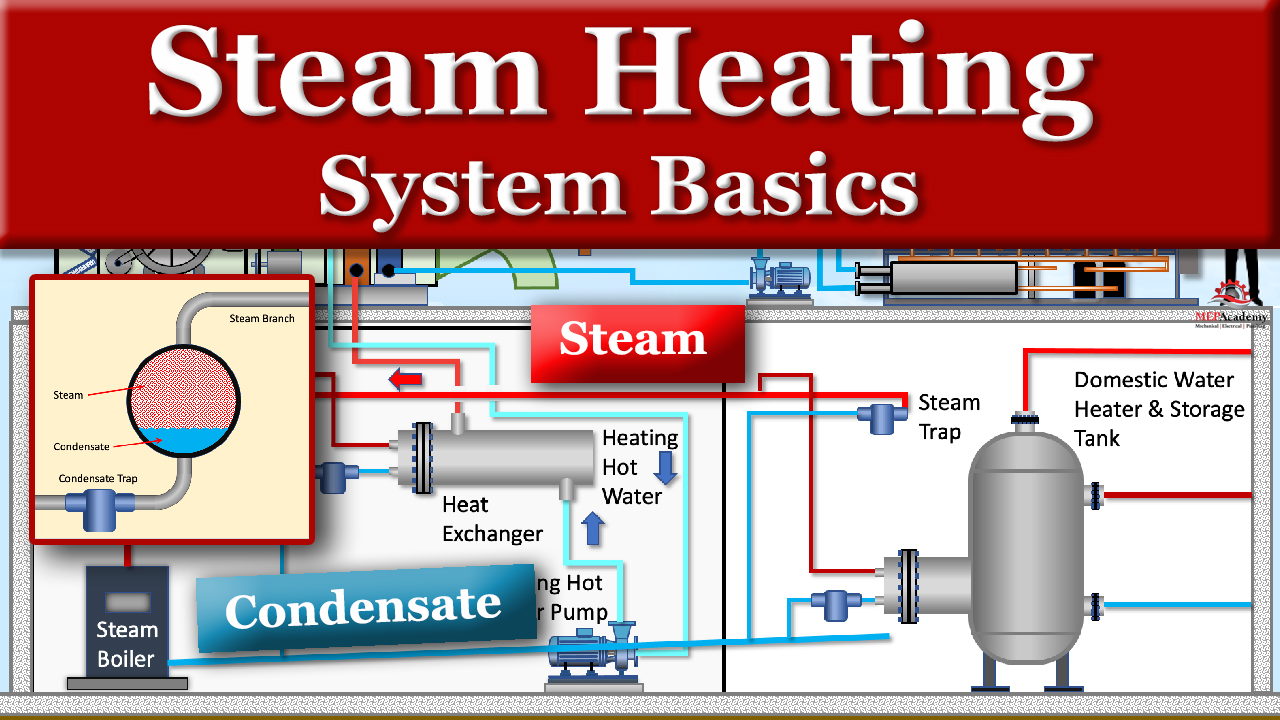In this article, we’re breaking down a topic that every HVAC tech needs to understand—superheat versus subcooling explained. What are they? Why do they matter? And how do they help you diagnose a system?
Superheat
Superheat is the temperature of a vapor refrigerant above its boiling point at a given pressure. In other words, it tells us how much heat the refrigerant has absorbed after it has completely boiled into a vapor in the evaporator.
We measure superheat at the suction line, just before the refrigerant enters the compressor. This helps us confirm that only vapor—not liquid—is entering the compressor, which is critical for protecting it from damage.
Here is an example, if the boiling point at a certain pressure is 40 degrees Fahrenheit (4.4 degrees Celsius), and the actual line temperature is 55 degrees Fahrenheit (12.8 degrees Celsius), then the superheat is 15 degrees Fahrenheit (8.3 degrees Celsius)

Subcooling
Subcooling is the temperature of a liquid refrigerant below its condensing point at a given pressure. It tells us how much the refrigerant has been cooled after it has fully condensed into a liquid in the condenser.
Subcooling is measured at the liquid line, just before the metering device. Proper subcooling ensures that only liquid—not flash gas—is entering the TXV or cap tube.
Example:
If the saturation temperature is 100 degrees Fahrenheit (37.8 degrees Celsius) and the line temp is 90 degrees Fahrenheit (32.2 degrees Celsius), then your subcooling is 10 degrees Fahrenheit (5.6 degrees Celsius),
Here’s a quick side-by-side comparison:
- Superheat is measured on the low-pressure side, after the evaporator
- Subcooling is measured on the high-pressure side, after the condenser
- Superheat protects the compressor
- Subcooling protects the metering device
- Both help ensure your system is charged properly
So why are these so important?
Too low superheat could mean liquid is getting to the compressor—bad news.
Too high superheat means the system is undercharged or the evaporator isn’t getting enough refrigerant. This indicates refrigerant vaporized too early, reducing cooling capacity and efficiency.
On the other side, too low subcooling can mean undercharging or flashing in the liquid line.
Too high subcooling might point to an overcharge or a restriction in the condenser.”
Superheating & Subcooling Target Temperatures
Superheat: 10 to 20 degrees Fahrenheit (5.6 to 11.1 degrees Celsius) depending on system and load
Subcooling: 8 to 15 degrees Fahrenheit (4.4 to 8.3 degrees Celsius) is common on most systems
But always refer to the manufacturer’s specs!”
And that’s the difference between superheat and subcooling! Two small measurements that make a huge difference in system performance.
If you found this article helpful, be sure to check out our HVAC and Plumbing Estimating Spreadsheets to streamline your construction bidding process, checkout our HVAC, Electrical and Plumbing Construction Forms to help you run your business and explore our Online Courses for in-depth training.

























